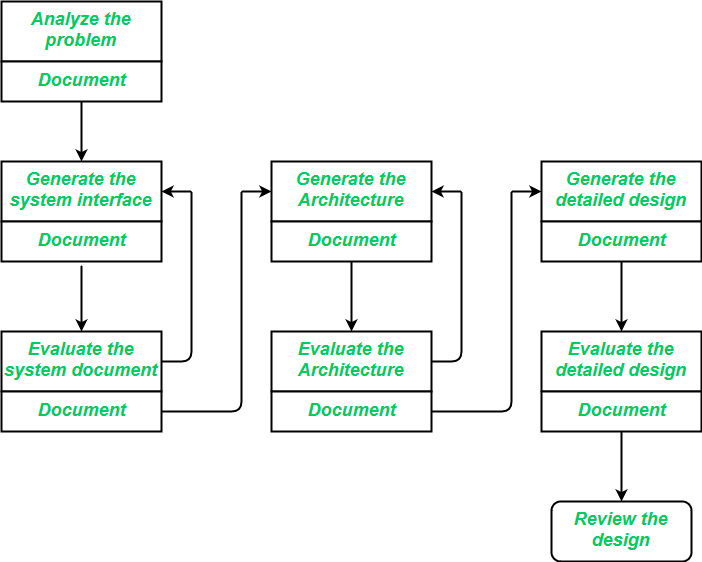sw_design_process_MscIt2
Software Design Process
The design phase of software development deals with transforming the customer requirements as described in the SRS documents into a form implementable using a programming language.
The software design process can be divided into the following three levels of phases of design:
-
Interface Design
-
Architectural Design
-
Detailed Design

Interface Design:
Interface design is the specification of the interaction between a system and its environment. this phase proceeds at a high level of abstraction with respect to the inner workings of the system i.e, during interface design, the internal of the systems are completely ignored and the system is treated as a black box. Attention is focussed on the dialogue between the target system and the users, devices, and other systems with which it interacts. The design problem statement produced during the problem analysis step should identify the people, other systems, and devices which are collectively called agents.
Interface design should include the following details:
-
Precise description of events in the environment, or messages from agents to which the system must respond.
-
Precise description of the events or messages that the system must produce.
-
Specification on the data, and the formats of the data coming into and going out of the system.
-
Specification of the ordering and timing relationships between incoming events or messages, and outgoing events or outputs.
Architectural Design:
Architectural design is the specification of the major components of a system, their responsibilities, properties, interfaces, and the relationships and interactions between them. In architectural design, the overall structure of the system is chosen, but the internal details of major components are ignored.
Issues in architectural design includes:
-
Gross decomposition of the systems into major components.
-
Allocation of functional responsibilities to components.
-
Component Interfaces
-
Component scaling and performance properties, resource consumption properties, reliability properties, and so forth.
-
Communication and interaction between components.
The architectural design adds important details ignored during the interface design. Design of the internals of the major components is ignored until the last phase of the design.
Detailed Design:
Design is the specification of the internal elements of all major system components, their properties, relationships, processing, and often their algorithms and the data structures.
The detailed design may include:
-
Decomposition of major system components into program units.
-
Allocation of functional responsibilities to units.
-
User interfaces
-
Unit states and state changes
-
Data and control interaction between units
-
Data packaging and implementation, including issues of scope and visibility of program elements
-
Algorithms and data structures